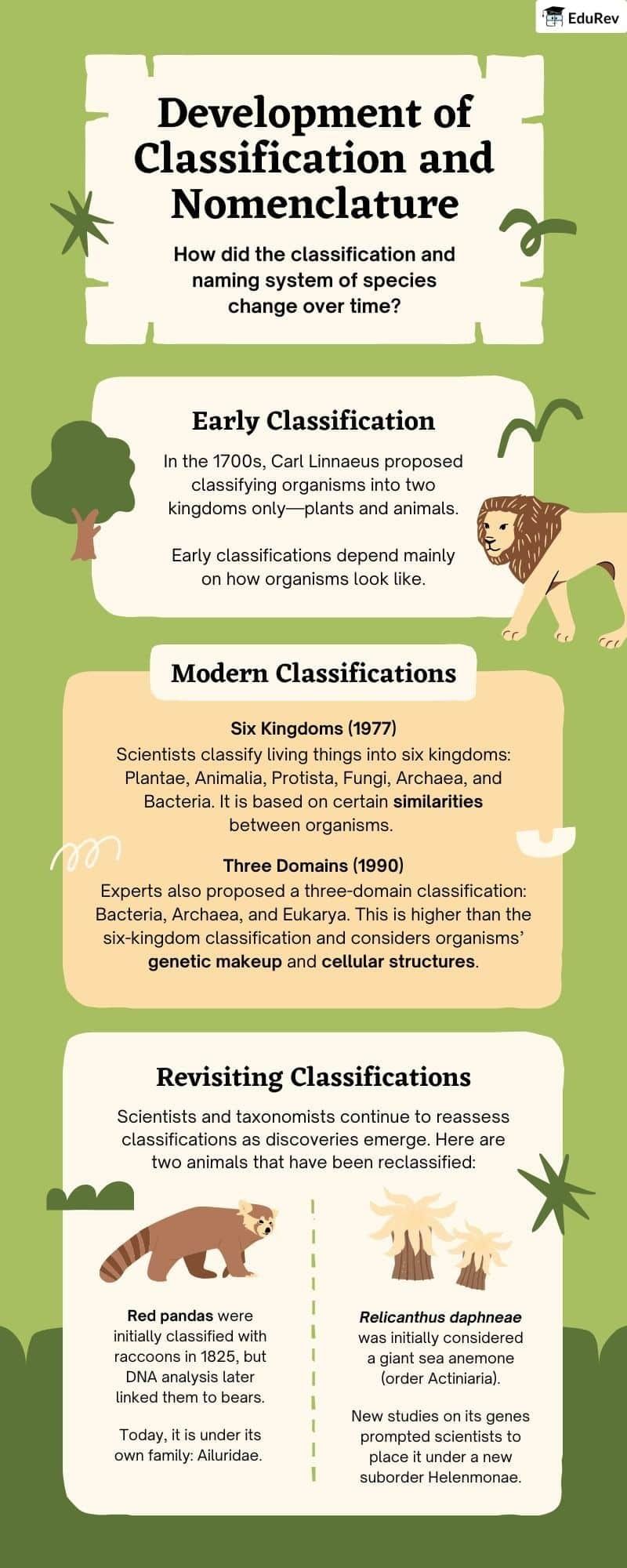NEET Exam > NEET Notes > Biology Class 11 > Infographics: Development of Classification and Nomenclature
Infographics: Development of Classification and Nomenclature | Biology Class 11 - NEET PDF Download

The document Infographics: Development of Classification and Nomenclature | Biology Class 11 - NEET is a part of the NEET Course Biology Class 11.
All you need of NEET at this link: NEET
|
150 videos|401 docs|136 tests
|
FAQs on Infographics: Development of Classification and Nomenclature - Biology Class 11 - NEET
| 1. What is the significance of classification and nomenclature in biological sciences? |  |
Ans. Classification and nomenclature are essential in biological sciences as they provide a systematic way of categorizing and naming organisms. This helps scientists communicate effectively about different species, understand relationships among them, and facilitate research and study across various fields. A standardized naming system, like the binomial nomenclature developed by Carl Linnaeus, ensures that each organism has a unique and universally accepted name, reducing confusion in scientific communication.
| 2. How does the binomial nomenclature system work? |  |
Ans. The binomial nomenclature system assigns each organism a two-part name consisting of the genus name and the species identifier. The genus name is capitalized, while the species name is written in lowercase, and both are italicized. For example, in the name *Homo sapiens*, *Homo* is the genus, and *sapiens* is the species. This systematic approach helps in organizing and identifying species while reflecting their evolutionary relationships.
| 3. Why is it important to update classification systems regularly? |  |
Ans. Updating classification systems is crucial due to ongoing discoveries and advancements in genetic research, which can reveal new information about the relationships between organisms. As scientists learn more about evolutionary biology and genetic similarities, some species may be reclassified, or new species may be identified. Regular updates ensure that classification reflects the most accurate understanding of biodiversity and evolutionary history.
| 4. What role do phylogenetic trees play in classification? |  |
Ans. Phylogenetic trees are diagrams that represent the evolutionary relationships among various biological species based on their genetic or physical characteristics. They illustrate how species are related through common ancestors and can help scientists understand the evolutionary pathways that led to current biodiversity. Phylogenetic trees are instrumental in refining classification systems and providing insights into the evolutionary history of organisms.
| 5. How do common names differ from scientific names, and why are scientific names preferred in research? |  |
Ans. Common names are the everyday names given to organisms, which can vary by region and language, leading to potential confusion. In contrast, scientific names are standardized and universally accepted, allowing for clear communication among scientists globally. Scientific names reduce ambiguity and ensure that each species is identified accurately, which is essential for research, conservation, and education.
Related Searches
















